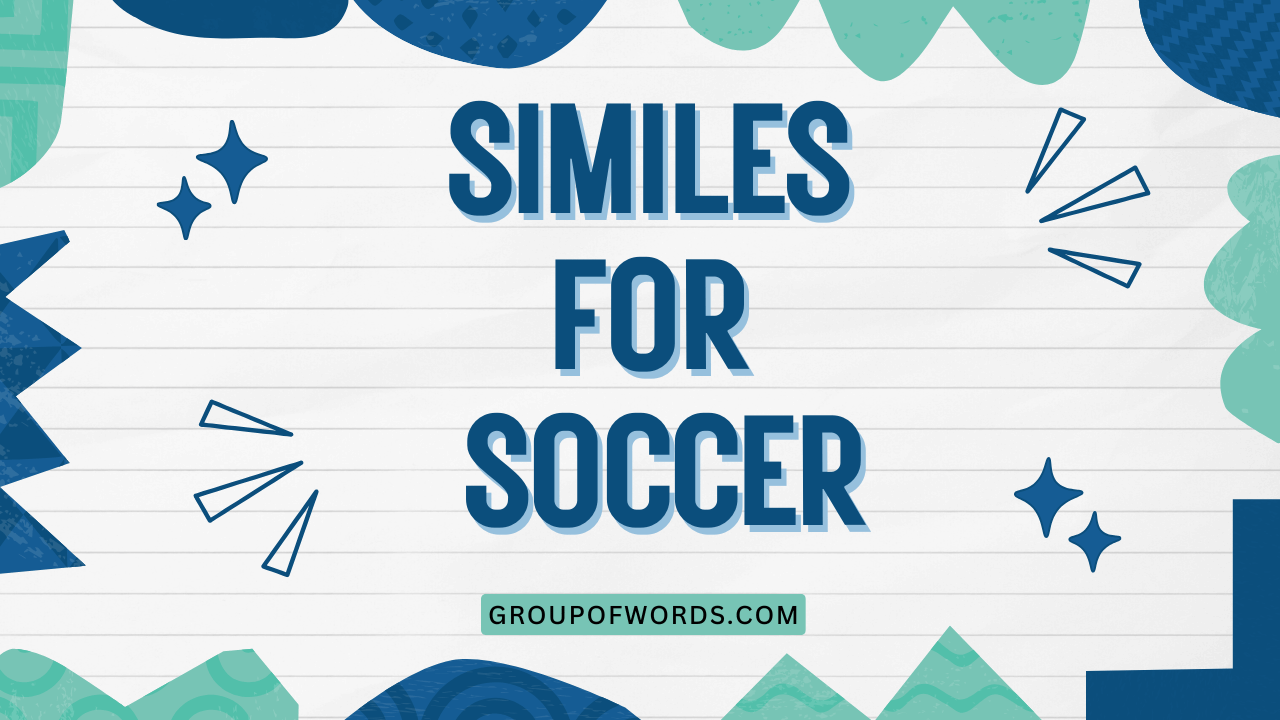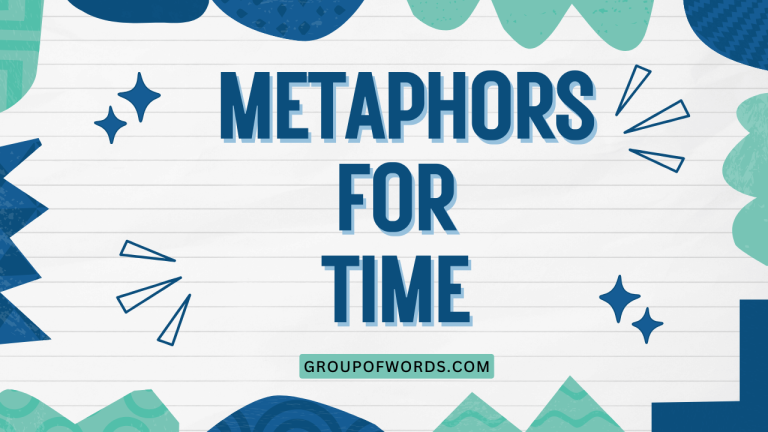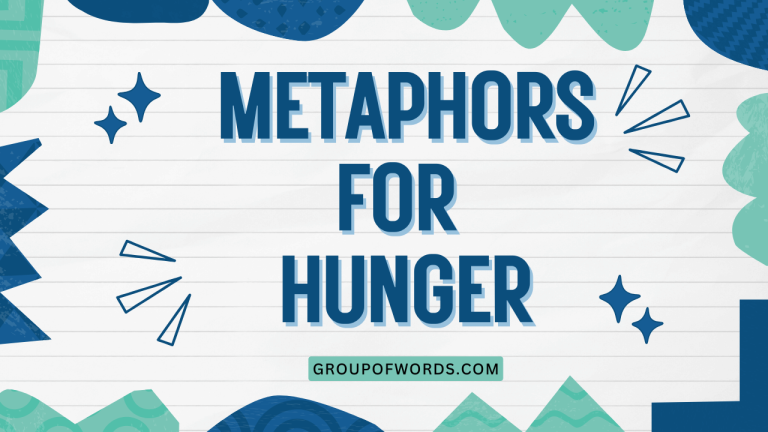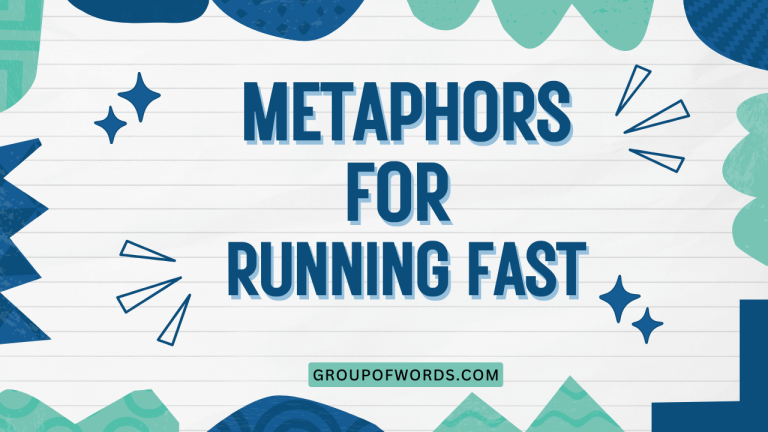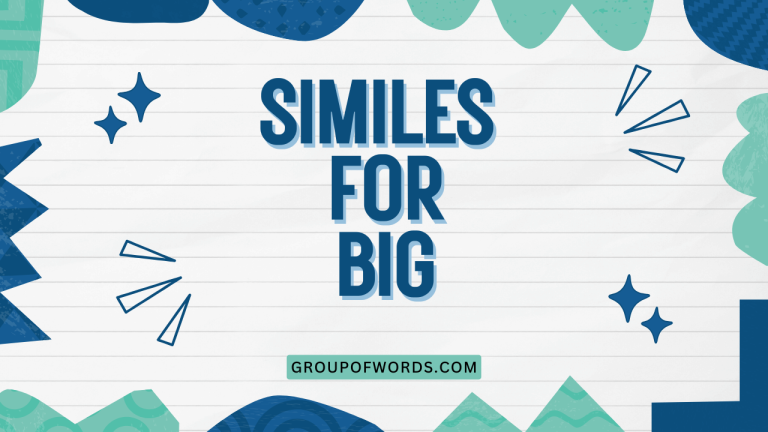Soccer Similes: A Comprehensive Guide to Figurative Language
Similes are powerful tools in the English language, adding color and vividness to our descriptions. Understanding how to use similes effectively can greatly enhance your writing and speaking skills.
This article delves into the world of similes, specifically focusing on their application in the context of soccer. Whether you’re a student, a writer, or simply a soccer enthusiast, this guide will equip you with the knowledge and skills to use similes to describe the beautiful game in a more engaging and imaginative way.
This comprehensive guide will explore the definition of similes, their structure, different types, and usage rules. We’ll also cover common mistakes to avoid and provide ample practice exercises to solidify your understanding.
Get ready to elevate your language skills and describe the world of soccer with flair!
Table of Contents
- Definition of a Simile
- Structural Breakdown of a Simile
- Types of Similes
- Examples of Soccer Similes
- Usage Rules for Similes
- Common Mistakes with Similes
- Practice Exercises
- Advanced Topics in Similes
- Frequently Asked Questions
- Conclusion
Definition of a Simile
A simile is a figure of speech that directly compares two different things, highlighting a shared quality or characteristic. The comparison is made explicit through the use of words such as “like” or “as.” Similes are used to make descriptions more vivid, engaging, and relatable by drawing parallels between familiar concepts and the subject being described. They are a fundamental part of figurative language, enhancing both written and spoken communication.
In essence, a simile functions as a bridge, connecting the unfamiliar or abstract to the familiar and concrete. This allows the audience to grasp the essence of the subject more easily.
For example, instead of simply saying “The soccer player was fast,” a simile might state, “The soccer player was as fast as a cheetah,” providing a much more impactful and memorable image.
Structural Breakdown of a Simile
The basic structure of a simile consists of three key elements:
- The Subject: The thing being described or compared (e.g., a soccer player, a pass, a shot).
- The Linking Word: Either “like” or “as,” which explicitly indicates the comparison.
- The Object of Comparison: The thing to which the subject is being compared, chosen for its shared quality (e.g., a cheetah, a rocket, a wall).
The formula can be represented as: Subject + Linking Word + Object of Comparison. For instance, in the simile “His shot was like a rocket,” “His shot” is the subject, “like” is the linking word, and “a rocket” is the object of comparison.
The effectiveness of a simile hinges on the appropriateness and clarity of the comparison. The shared quality between the subject and the object of comparison should be readily apparent to the audience.
A well-crafted simile not only enhances understanding but also adds a layer of creativity and artistry to the language.
Types of Similes
While all similes share the basic structure of comparing two things using “like” or “as,” they can be categorized based on their purpose or the nature of the comparison.
Descriptive Similes
Descriptive similes focus on providing a vivid and detailed description of the subject. They aim to create a strong mental image in the reader’s mind by highlighting specific qualities.
Explanatory Similes
Explanatory similes are used to clarify or explain a concept by comparing it to something more familiar or understandable. They help the audience grasp complex ideas more easily.
Emphatic Similes
Emphatic similes are used to emphasize a particular quality or characteristic, making it more impactful and memorable. They often involve hyperbole or exaggeration to drive the point home.
Examples of Soccer Similes
Here are numerous examples of similes used to describe various aspects of soccer, categorized for clarity.
Similes Describing Speed
Speed is a crucial element in soccer, and similes can effectively convey the swiftness of players, passes, or even the ball itself. The following table provides examples of similes used to describe speed in the context of soccer.
These similes often use objects or animals known for their speed to create a vivid image of rapid movement.
| Simile | Explanation |
|---|---|
| He sprinted like a cheetah chasing its prey. | Compares the player’s speed to the fast hunting speed of a cheetah. |
| The ball zipped across the field as fast as lightning. | Compares the speed of the ball to the rapid flash of lightning. |
| She moved through the defense like a hot knife through butter. | Implies effortless and rapid movement through the opposing team. |
| His reflexes were as quick as a cobra’s strike. | Compares his reaction time to the incredibly fast strike of a cobra. |
| The counter-attack unfolded like a bullet from a gun. | Highlights the sudden and unstoppable nature of the attack. |
| He was as swift as a gazelle on the open plains. | Illustrates his agility and speed in a wide space. |
| The winger flew down the sideline like the wind. | Depicts his speed and unstoppable momentum. |
| The pass was as rapid as a hummingbird’s wings. | Compares the pass’s speed to the blur of a hummingbird’s wings. |
| He darted through the defenders like a phantom. | Emphasizes his elusive and rapid movements. |
| The ball traveled like a tracer bullet towards the goal. | Highlights the speed and direct path of the ball. |
| Her acceleration was like a rocket launching into space. | Compares her sudden burst of speed to the powerful launch of a rocket. |
| His feet moved as fast as a drum solo. | Illustrates the rapid and intricate movements of his feet. |
| The through ball was delivered like a laser beam. | Highlights the precision and speed of the pass. |
| He ran back to defend as quickly as a retreating army. | Compares his urgency and speed in defense to a fast retreat. |
| The team’s pace was as relentless as a ticking clock. | Emphasizes the constant and unyielding speed of the team. |
| He accelerated towards the goal like a runaway train. | Depicts his unstoppable momentum and speed. |
| The attack surged forward as fast as a flood. | Compares the overwhelming speed of the attack to a flood. |
| His movement was as fluid as mercury. | Illustrates the smooth and rapid nature of his movements. |
| She dashed past the defenders like a blur. | Highlights her speed and the difficulty of tracking her. |
| The ball sailed through the air as effortlessly as a thrown dart. | Emphasizes the ease and speed of the ball’s trajectory. |
| His speed was like greased lightning. | Emphasizes the incredible speed and agility of the player. |
| The pass cut through the defense as sharply as a knife. | Highlights the precision and speed of the pass. |
| He closed down the attacker as fast as a striking snake. | Illustrates the rapid and decisive nature of his defensive action. |
Similes Describing Skill
Skill in soccer encompasses a wide range of abilities, from dribbling and passing to shooting and defending. Similes can be used to highlight the finesse, precision, and artistry of skilled players.
The table below provides examples of similes that describe various aspects of skill in soccer.
| Simile | Explanation |
|---|---|
| His dribbling skills were like a magician’s sleight of hand. | Compares his dribbling to the deceptive and skillful movements of a magician. |
| Her passes were as precise as a surgeon’s cut. | Highlights the accuracy and precision of her passes. |
| He controlled the ball as if it were glued to his feet. | Emphasizes his exceptional ball control. |
| Her technique was as smooth as silk. | Illustrates the effortless and graceful nature of her technique. |
| His vision on the field was like having eyes in the back of his head. | Highlights his awareness and ability to anticipate plays. |
| He moved the ball like a painter strokes a brush. | Illustrates the artistry and finesse of his ball control. |
| His touch was as delicate as a feather. | Emphasizes the softness and precision of his touch. |
| Her footwork was as intricate as a spider’s web. | Compares her complex and skillful footwork to a spider’s web. |
| He defended like a fortress, impenetrable and strong. | Highlights his strong and unwavering defensive skills. |
| His shots were as accurate as a guided missile. | Compares his shooting accuracy to the precision of a guided missile. |
| She orchestrated the midfield like a conductor leading an orchestra. | Illustrates her control and coordination of the midfield. |
| His ability to read the game was like having a crystal ball. | Compares his ability to anticipate plays to the foresight of a crystal ball. |
| He tackled with the precision of a skilled surgeon. | Highlights the accuracy and timing of his tackles. |
| Her crosses were delivered as perfectly as a gift. | Emphasizes the accuracy and timing of her crosses. |
| His awareness on the field was as sharp as a hawk’s vision. | Compares his field awareness to the keen eyesight of a hawk. |
| He protected the ball like a mother bear protecting her cubs. | Illustrates his determination and skill in protecting the ball. |
| His passes split the defense like a hot knife through butter. | Highlights the precision and effectiveness of his passes. |
| Her anticipation was as keen as a chess player’s strategy. | Compares her anticipation to the strategic thinking of a chess player. |
| He maneuvered through the defense like a snake through grass. | Illustrates his agility and skill in navigating through defenders. |
| His control of the ball was as masterful as a sculptor shaping clay. | Emphasizes the artistry and control of his ball handling. |
| His ability to find space was like water finding a crack. | Illustrates his ability to find and exploit open space. |
| Her leadership on the field was as commanding as a general leading troops. | Highlights her leadership and ability to direct the team. |
| He struck the ball as cleanly as a golfer hitting a perfect drive. | Compares the cleanness of his strike to a perfect golf swing. |
Similes Describing Strength
Strength is a vital attribute in soccer, whether it’s physical strength for tackling and holding off opponents, or mental strength for maintaining focus and resilience. Similes can effectively convey the robustness and power of players and their actions.
Here are examples of similes describing strength in soccer.
| Simile | Explanation |
|---|---|
| He was as strong as an ox in the tackle. | Compares his strength to the robust power of an ox. |
| His shot was as powerful as a cannon blast. | Highlights the immense power of his shot. |
| She defended with the strength of a lioness protecting her cubs. | Compares her defensive strength to the fierce protection of a lioness. |
| His presence on the field was as imposing as a mountain. | Illustrates his dominant and powerful presence. |
| He held off the defender like a brick wall. | Highlights his strength and ability to withstand pressure. |
| His determination was as unyielding as steel. | Compares his unwavering determination to the strength of steel. |
| He charged through the defense like a battering ram. | Emphasizes his forceful and unstoppable advance. |
| His grip on the ball was as tight as a vise. | Compares his firm grip to the unyielding pressure of a vise. |
| He stood his ground like a rock in a storm. | Illustrates his resilience and strength in the face of adversity. |
| His tackles were as forceful as a thunderclap. | Compares the impact of his tackles to the loud and powerful sound of thunder. |
| He muscled his way through the defense like a bulldozer. | Highlights his brute strength and ability to overcome obstacles. |
| His endurance was as relentless as a marathon runner. | Compares his stamina to the enduring strength of a marathon runner. |
| He shielded the ball as fiercely as a knight guarding a treasure. | Illustrates his determination and strength in protecting the ball. |
| His physical presence was as dominant as a bear in the woods. | Compares his imposing presence to the dominance of a bear. |
| He was as resilient as bamboo, bending but never breaking. | Highlights his ability to withstand pressure and recover. |
| His will to win was as strong as an iron bar. | Compares his determination to the strength of iron. |
| He cleared the ball with the force of a hurricane. | Emphasizes the power and force of his clearance. |
| His tackles were as solid as a concrete wall. | Compares the solidity and impact of his tackles to a concrete wall. |
| He fought for the ball like a warrior in battle. | Illustrates his determination and strength in competing for the ball. |
| His resolve was as steadfast as a mountain range. | Emphasizes his unwavering determination and strength. |
| His comeback was as powerful as a tidal wave. | Highlights the overwhelming strength of his return. |
| His leap for the header was as high as a basketball player’s jump. | Compares the height of his jump to that of a basketball player’s jump. |
| He stood his ground as firmly as an oak tree. | Illustrates his strength and stability on the field. |
Similes Describing Accuracy
Accuracy is paramount in soccer, whether it’s in passing, shooting, or tackling. Similes can effectively highlight the precision and exactness of these actions.
The following table provides examples of similes that describe various aspects of accuracy in soccer.
| Simile | Explanation |
|---|---|
| His passes were as accurate as a GPS. | Compares the accuracy of his passes to the precision of a GPS system. |
| Her shots were as precise as a marksman’s aim. | Highlights the accuracy and precision of her shots. |
| His tackles were as timed as a Swiss watch. | Compares the timing and precision of his tackles to a Swiss watch. |
| Her crosses landed as perfectly as a guided drone. | Illustrates the accuracy and precision of her crosses. |
| His free kicks were as accurate as a dart hitting the bullseye. | Highlights the precision and accuracy of his free kicks. |
| His passes split the defense as cleanly as a laser beam. | Compares the precision of his passes to a laser beam. |
| His aim was as sharp as an archer’s arrow. | Emphasizes the accuracy and precision of his aim. |
| Her corners were delivered as accurately as a mailman delivering mail. | Compares the consistency and accuracy of her corner kicks. |
| His long balls were as precise as a sniper’s shot. | Illustrates the accuracy and targeted nature of his long passes. |
| His interceptions were as perfectly timed as a clock striking the hour. | Compares the timing and accuracy of his interceptions to a clock. |
| His placement of the ball was as meticulous as a surgeon’s precision. | Highlights the careful and accurate placement of the ball. |
| His passes found their target as unerringly as a homing pigeon. | Compares the accuracy of his passes to the reliability of a homing pigeon. |
| His crosses floated into the box as gently as a feather landing. | Illustrates the soft and accurate delivery of his crosses. |
| His passes were threaded through the eye of a needle. | Emphasizes the precision and narrow margin of error in his passes. |
| His shots curved into the net as predictably as a falling leaf. | Compares the consistent accuracy of his shots to a falling leaf. |
| His tackles were as precise as a computer algorithm. | Highlights the accuracy and efficiency of his tackles. |
| His volleys were as accurately struck as a golf ball off the tee. | Compares the precision of his volleys to a well-struck golf ball. |
| His through balls were timed as perfectly as a symphony conductor’s cue. | Illustrates the timing and accuracy of his through balls. |
| His crosses landed on the striker’s head as precisely as a magnet attracting metal. | Emphasizes the accurate placement of his crosses. |
| His passes were delivered with the accuracy of a seasoned quarterback. | Highlights the precision and skill in his passing. |
| His shots were as well-placed as a chess move. | Compares the strategic accuracy of his shots to a chess move. |
| His passes were as direct as an arrow to its target. | Illustrates the straight and accurate path of his passes. |
| His set pieces were delivered with the accuracy of a master carpenter. | Compares the precision of his set pieces to the skill of a carpenter. |
Similes Describing Teamwork
Teamwork is essential for success in soccer, requiring coordination, communication, and mutual support among players. Similes can effectively capture the synergy and cooperation that define effective teamwork.
The table below provides examples of similes that describe teamwork in soccer.
| Simile | Explanation |
|---|---|
| They played together like a well-oiled machine. | Compares their teamwork to the smooth and efficient operation of a machine. |
| Their coordination was as seamless as a perfectly choreographed dance. | Highlights the fluidity and precision of their teamwork. |
| They moved as a unit, like a flock of birds in flight. | Compares their coordinated movements to the synchronized flight of birds. |
| Their passing was as synchronized as a rowing team. | Illustrates the coordinated and rhythmic nature of their passing. |
| They supported each other like a family. | Compares their mutual support and encouragement to that of a family. |
| Their defense worked together like a pack of wolves. | Highlights their coordinated and aggressive defensive efforts. |
| They communicated on the field like a hive mind. | Compares their communication and understanding to a unified consciousness. |
| Their teamwork was as essential as cogs in a clock. | Illustrates the interdependence and importance of each player’s role. |
| They played as one, like a single organism. | Emphasizes their unity and coordination on the field. |
| Their strategies unfolded like a well-rehearsed play. | Compares their tactical execution to a rehearsed performance. |
| Their cooperation was as smooth as butter. | Highlights the effortless and harmonious nature of their teamwork. |
| They covered for each other like a blanket. | Compares their mutual support and protection to a comforting blanket. |
| They worked together like bees in a hive. | Illustrates their collective effort and shared purpose. |
| Their synergy was as powerful as a symphony orchestra. | Compares their coordinated efforts to the harmonious sound of an orchestra. |
| They defended their goal like a united front. | Emphasizes their collective effort in protecting their goal. |
| Their attack flowed as smoothly as a river. | Compares the fluidity and coordination of their attack to a flowing river. |
| They trusted each other like brothers in arms. | Highlights their mutual trust and support on the field. |
| Their team spirit was as infectious as a contagious laugh. | Compares their positive and encouraging team spirit to a contagious laugh. |
| They moved in sync like dancers in a ballet. | Illustrates the synchronized and graceful nature of their movements. |
| They passed the ball like they were reading each other’s minds. | Emphasizes their intuitive understanding and coordination. |
| They functioned as a team as efficiently as a pit crew at a race. | Compares their teamwork to the efficiency of a pit crew. |
| Their combined efforts were as effective as a well-coordinated construction team. | Illustrates the effectiveness of their teamwork in achieving their goals. |
| They supported each other’s plays like climbers on a rope. | Compares their mutual support to climbers relying on each other. |
Similes Describing Emotion
Emotions run high in soccer, from the thrill of victory to the agony of defeat. Similes can effectively convey the intensity and depth of these emotions.
The table below provides examples of similes that describe various emotions experienced in soccer.
| Simile | Explanation |
|---|---|
| His disappointment was as heavy as a lead weight. | Compares his disappointment to the heaviness of lead. |
| Her joy was as bright as the sun. | Highlights the radiant and intense nature of her joy. |
| His anger burned like a wildfire. | Compares his anger to the destructive force of a wildfire. |
| Her relief washed over her like a cool wave. | Illustrates the soothing and calming effect of her relief. |
| His fear was as chilling as a winter wind. | Compares his fear to the cold and unsettling feeling of a winter wind. |
| Her excitement bubbled up like champagne. | Highlights the effervescent and joyous nature of her excitement. |
| His frustration mounted like a rising tide. | Compares his increasing frustration to a rising tide. |
| Her sadness was as deep as the ocean. | Illustrates the profound and overwhelming nature of her sadness. |
| His determination was as fierce as a lion’s roar. | Compares his unwavering determination to the powerful roar of a lion. |
| Her hope flickered like a candle in the wind. | Illustrates the fragility and vulnerability of her hope. |
| His confidence soared like an eagle. | Compares his rising confidence to the soaring flight of an eagle. |
| Her despair was as dark as a moonless night. | Illustrates the bleak and overwhelming nature of her despair. |
| His passion for the game burned like a fire. | Compares his intense passion to a burning fire. |
| Her nerves were as tight as a drum. | Illustrates the tension and anxiety she felt. |
| His pride swelled like a balloon. | Compares his growing pride to an inflating balloon. |
| Her gratitude was as warm as sunshine. | Highlights the comforting and appreciative nature of her gratitude. |
| His disappointment stung like a bee sting. | Compares the sharp and painful feeling of his disappointment. |
| Her happiness was as infectious as laughter. | Illustrates the contagious and uplifting nature of her happiness. |
| His resolve was as solid as a rock. | Compares his unwavering resolve to the strength of a rock. |
| His joy erupted like a volcano after the goal. | Highlights the explosive and overwhelming nature of his joy. |
| Her emotions were as turbulent as a stormy sea. | Illustrates the intensity and volatility of her emotions. |
| His disappointment lingered like a shadow. | Compares the persistent feeling of his disappointment to a lingering shadow. |
| Her hope blossomed like a flower in spring. | Illustrates the growth and beauty of her hope. |
Usage Rules for Similes
Using similes effectively involves adhering to certain guidelines to ensure clarity, impact, and appropriateness.
- Ensure a Clear Comparison: The shared quality between the subject and the object of comparison should be readily apparent. Avoid obscure or far-fetched comparisons that may confuse the audience.
- Use “Like” or “As”: These are the standard linking words for similes. Using other words to make a comparison may result in a metaphor or another figure of speech.
- Maintain Consistency: Ensure that the simile aligns with the overall tone and style of your writing. Avoid using overly casual or informal similes in formal contexts.
- Avoid Clichés: While some similes are widely used, try to create fresh and original comparisons to make your writing more engaging and memorable.
- Consider the Audience: Tailor your similes to the knowledge and understanding of your audience. A simile that works well for one audience may not be effective for another.
By following these rules, you can use similes to enhance your writing and speaking skills, making your descriptions more vivid, engaging, and impactful.
Common Mistakes with Similes
Several common mistakes can detract from the effectiveness of similes. Being aware of these errors can help you avoid them.
| Mistake | Incorrect Example | Correct Example |
|---|---|---|
| Using Metaphors Instead of Similes: Confusing a simile with a metaphor. | The soccer player was a cheetah. | The soccer player was as fast as a cheetah. |
| Using Unclear Comparisons: Making comparisons that are difficult to understand. | His pass was like a quantum entanglement. | His pass was as precise as a laser beam. |
| Using Clichés: Relying on overused and unoriginal similes. | He was as strong as an ox. | He was as strong as a charging bull. |
| Inconsistent Tone: Using similes that clash with the overall tone of the writing. | The serious match was like a party. | The intense match was like a battle. |
| Redundant Comparisons: Stating the obvious without adding new information. | The blue sky was as blue as the sky. | The blue sky was as blue as a sapphire. |
By avoiding these common mistakes, you can ensure that your similes are clear, effective, and enhance the quality of your writing.
Practice Exercises
Test your understanding of similes with these practice exercises. Identify the similes in the following sentences and explain their meaning.
Exercise 1
| Question | Answer |
|---|---|
| 1. The soccer field was as green as an emerald. | Simile: “as green as an emerald.” Meaning: The field was a vibrant and rich green color. |
| 2. He ran like the wind to catch up with the ball. | Simile: “like the wind.” Meaning: He ran very quickly. |
| 3. Her shot was as powerful as a thunderbolt. | Simile: “as powerful as a thunderbolt.” Meaning: Her shot was extremely powerful. |
| 4. The crowd roared like a pack of lions. | Simile: “like a pack of lions.” Meaning: The crowd made a loud and intense noise. |
| 5. His pass was as smooth as silk. | Simile: “as smooth as silk.” Meaning: His pass was effortless and graceful. |
| 6. The defenders stood like a wall in front of the goal. | Simile: “like a wall.” Meaning: The defenders formed an impenetrable barrier. |
| 7. His moves were as elusive as a phantom. | Simile: “as elusive as a phantom.” Meaning: His moves were difficult to predict or follow. |
| 8. The game was as tense as a tightrope walk. | Simile: “as tense as a tightrope walk.” Meaning: The game was filled with suspense and uncertainty. |
| 9. She weaved through the defense like a river finding its course. | Simile: “like a river finding its course.” Meaning: She moved smoothly and naturally through the defense. |
| 10. His determination was as solid as a rock. | Simile: “as solid as a rock.” Meaning: His determination was unwavering and strong. |
Exercise 2
Complete the following sentences by adding an appropriate simile.
| Question | Answer |
|---|---|
| 1. The stadium was as loud as __________. | The stadium was as loud as a rock concert. |
| 2. He dribbled the ball like __________. | He dribbled the ball like a seasoned professional. |
| 3. Her tackles were as fierce as __________. | Her tackles were as fierce as a cornered animal. |
| 4. The team worked together like __________. | The team worked together like a well-rehearsed orchestra. |
| 5. His disappointment was as deep as __________. | His disappointment was as deep as a well. |
| 6. The victory felt as sweet as __________. | The victory felt as sweet as honey. |
| 7. He jumped for the header like __________. | He jumped for the header like a
astronaut leaping on the moon. |
Advanced Topics in Similes
Once you’ve mastered the basics of similes, you can explore more advanced techniques to enhance your writing further.
Extended Similes
An extended simile is a simile that is developed over several lines or even a paragraph. This allows for a more detailed and nuanced comparison, creating a stronger and more lasting impression on the reader.
Subverted Similes
A subverted simile is one that intentionally breaks the expected pattern or creates an unexpected comparison. This can be used to create humor, irony, or to challenge the reader’s assumptions.
Multiple Similes
Using multiple similes in close proximity can create a rich and layered description, providing the reader with a more complete and vivid picture of the subject.
Frequently Asked Questions
What is the difference between a simile and a metaphor?
A simile uses “like” or “as” to make a direct comparison, while a metaphor implies a comparison without using these words. For example, “He is like a lion” (simile) versus “He is a lion” (metaphor).
Why are similes useful in writing?
Similes enhance descriptions, make writing more engaging, and help readers understand complex ideas by relating them to familiar concepts.
How can I avoid using clichés in my similes?
Try to think of fresh and original comparisons that are specific to the subject you are describing. Consider unique qualities or characteristics that can create a more vivid image.
Can a simile be too long?
Yes, a simile can be too long if it becomes convoluted or detracts from the main point. Keep your similes concise and focused to maintain their impact.
Is it okay to use similes in formal writing?
Yes, similes can be used in formal writing, but they should be used judiciously and appropriately. Ensure that the similes align with the overall tone and style of the writing.
Conclusion
Similes are a valuable tool for adding depth, color, and clarity to your writing and speaking. By understanding the structure, types, and usage rules of similes, you can effectively use them to enhance your descriptions of soccer and other subjects.
Whether you’re describing the speed of a player, the skill of a pass, or the intensity of an emotion, similes can help you create a more engaging and memorable experience for your audience. Practice using similes regularly, and you’ll find that they become an indispensable part of your linguistic toolkit.
